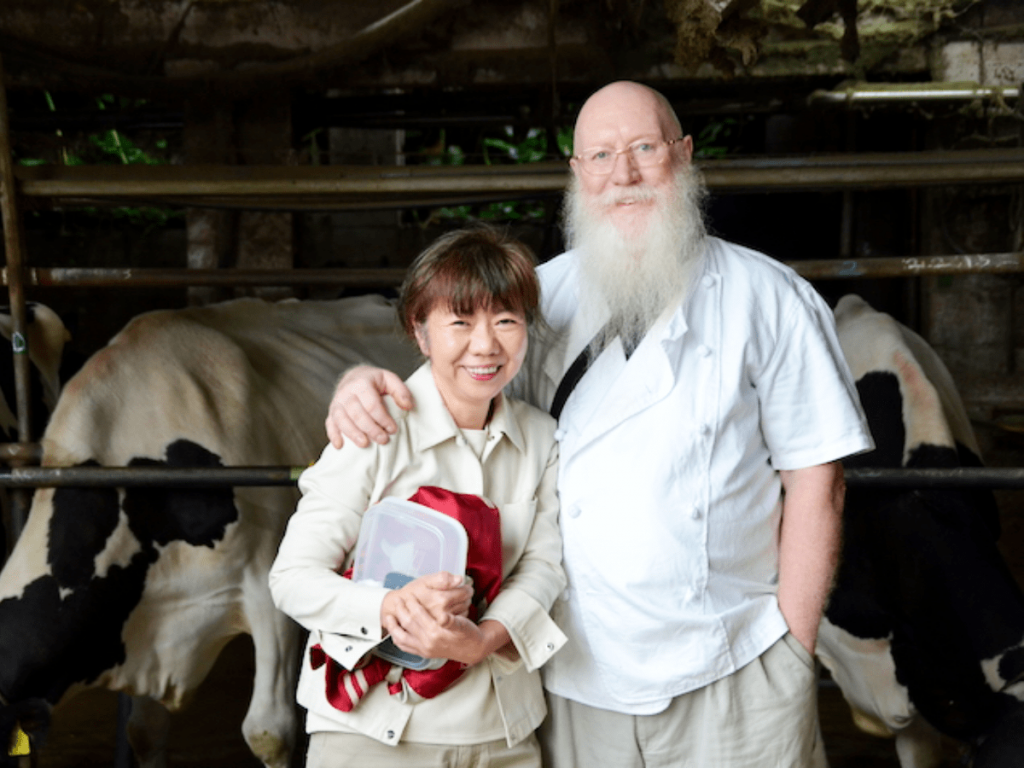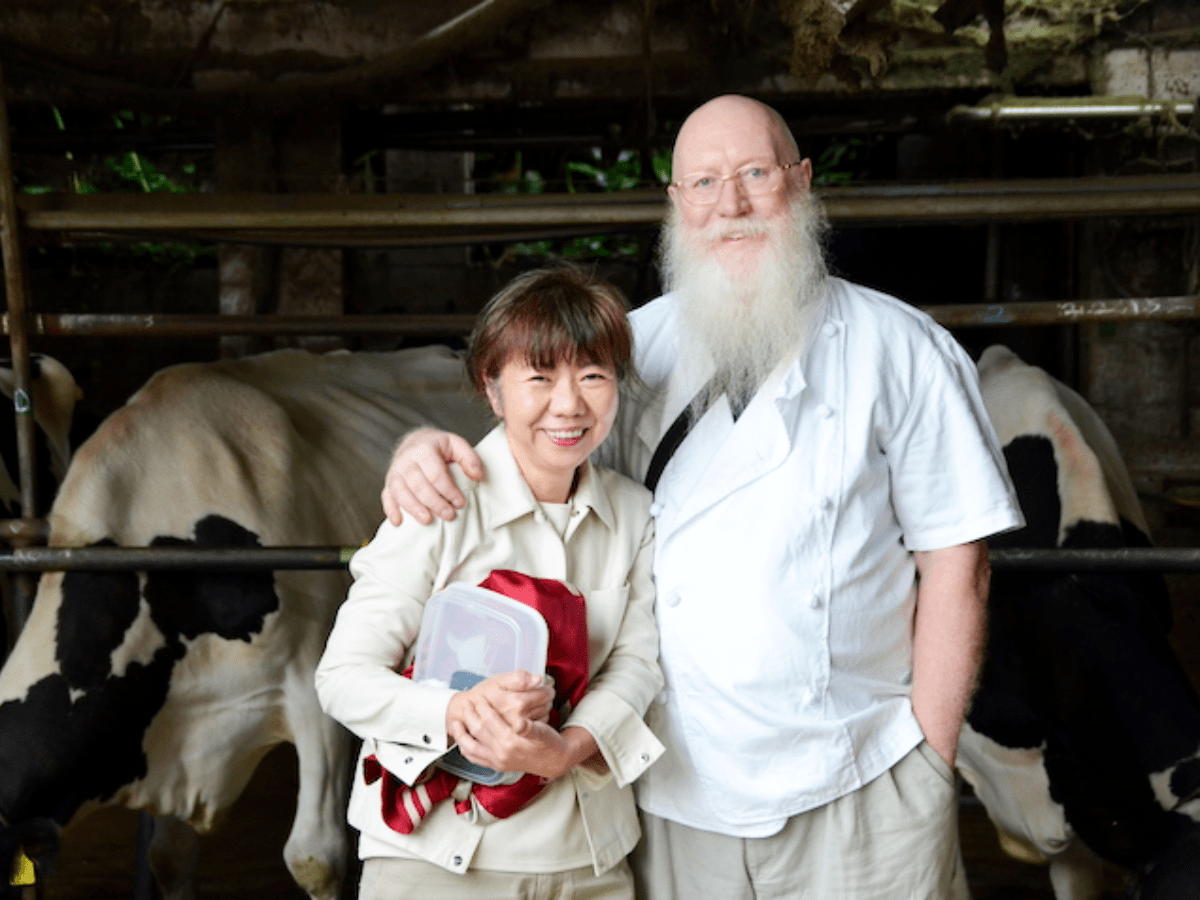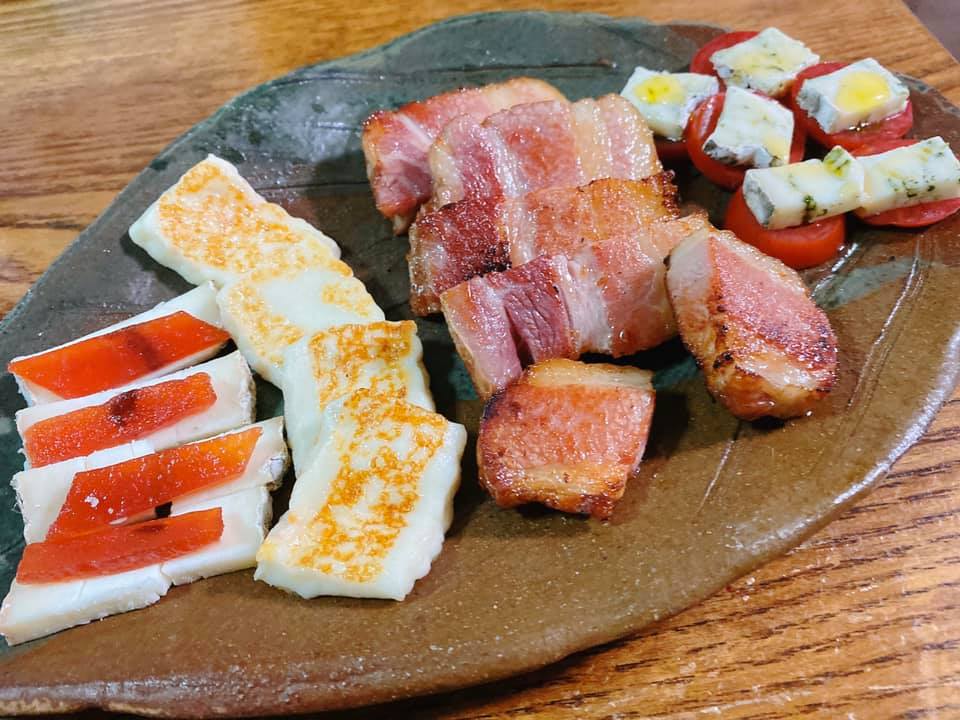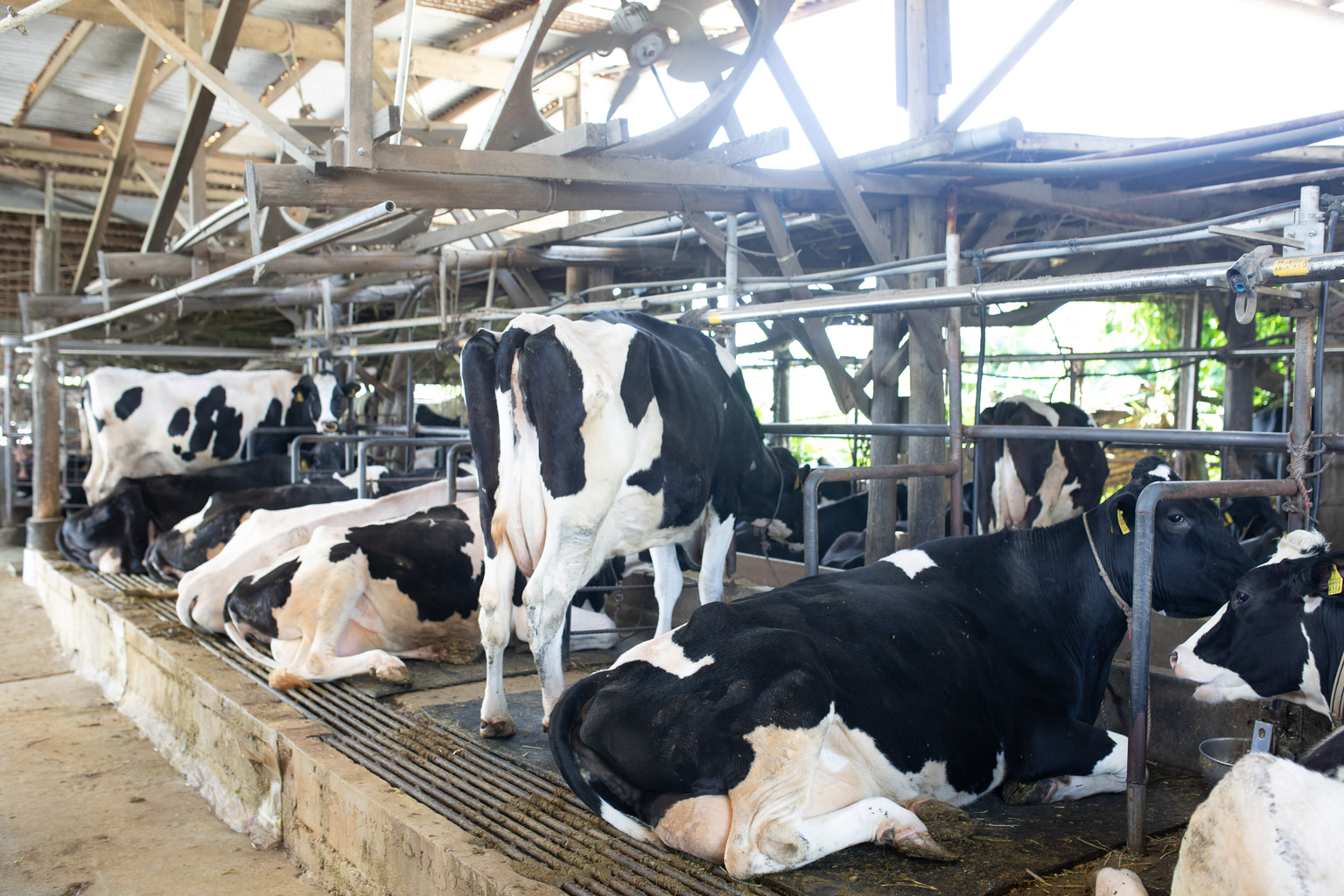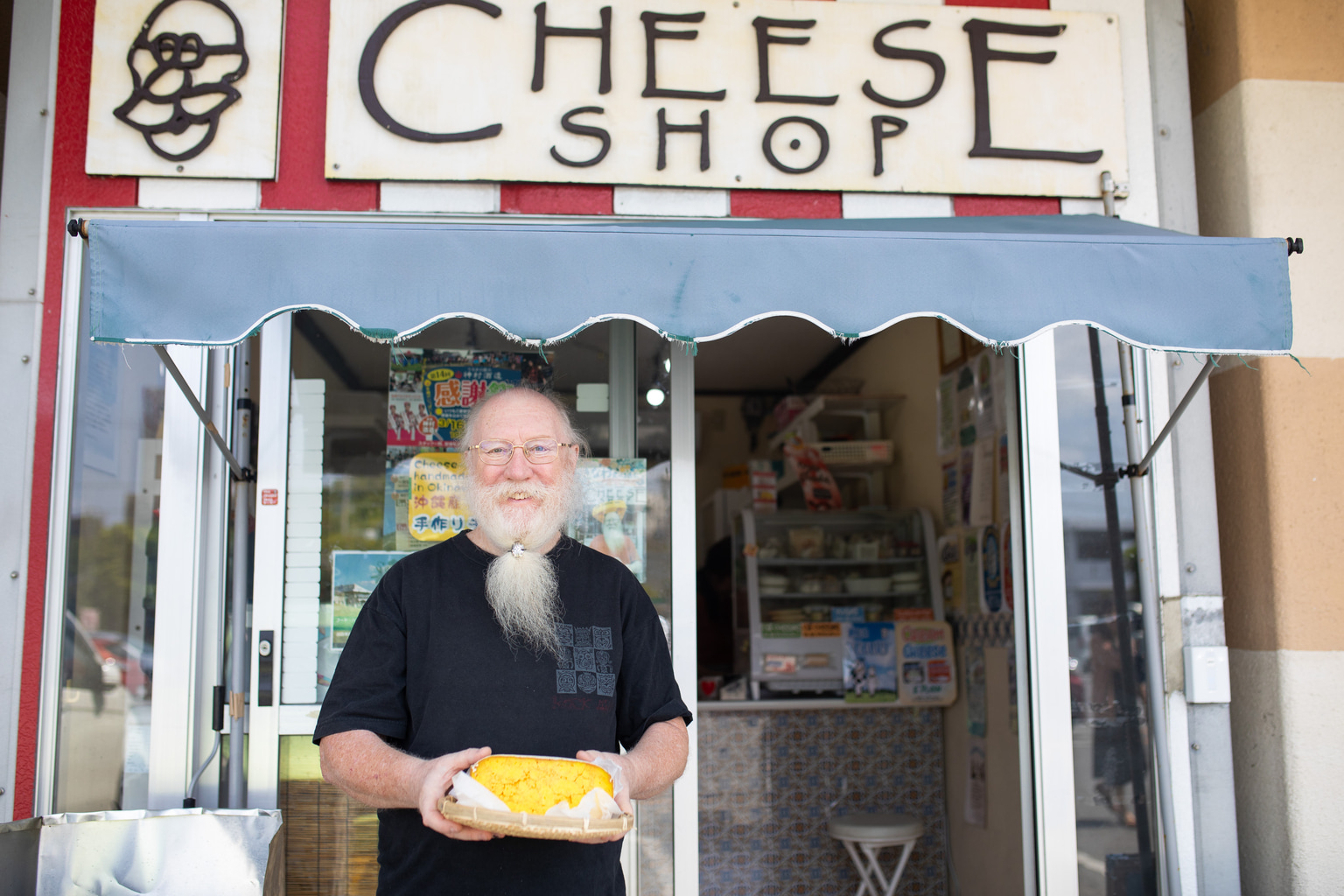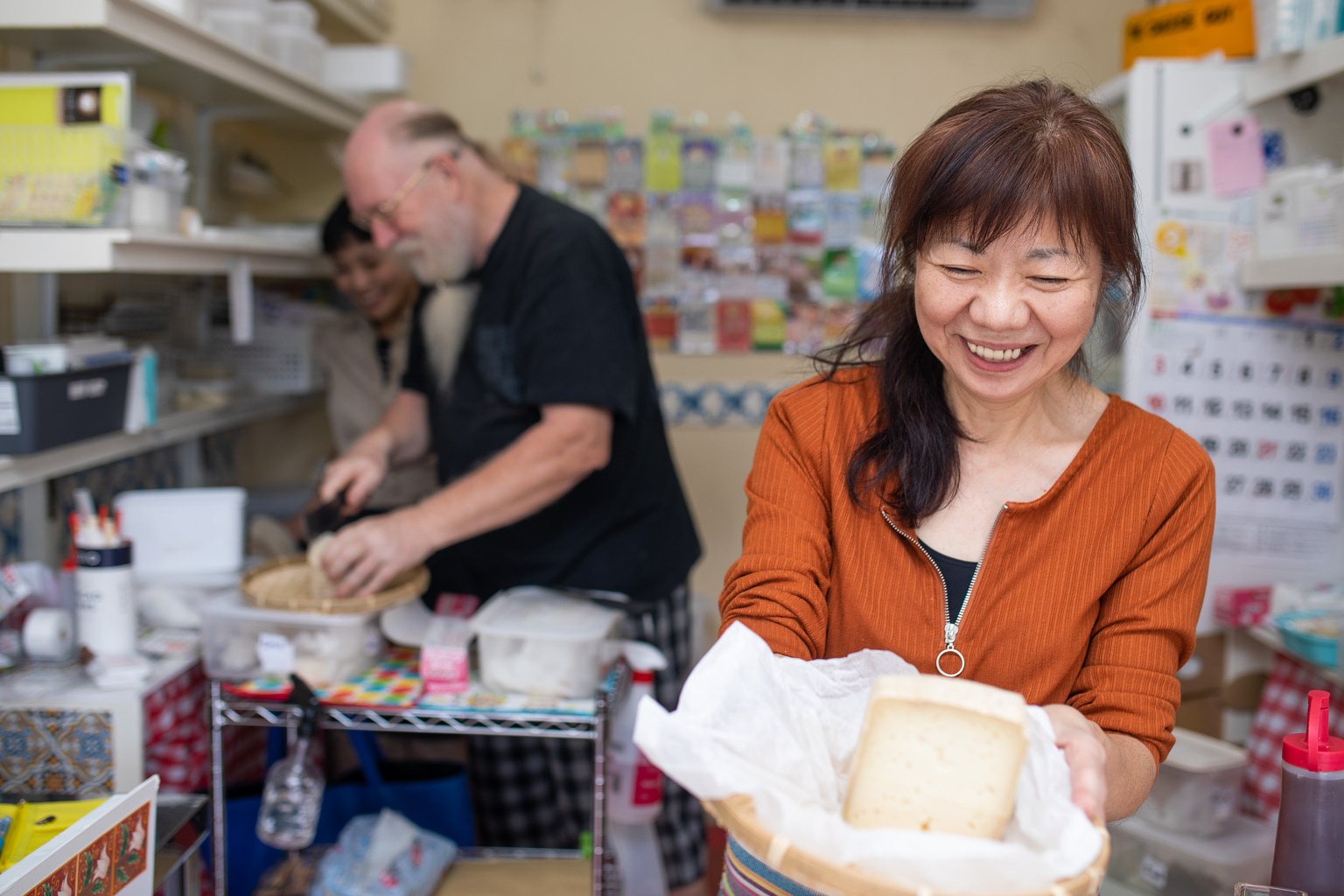Living in Japan since 1976, John Davis has always loved the food here. But like many members of the international community, he found the country lacked a good selection of cheese. “I remembered helping my mother make cheese as a child and decided to see if I could revive the skills,” Davis writes on his website. TW recently spoke with him about his journey from Hokkaido to making handmade cheese in Okinawa, starting a business in Japan and, of course, his favorite cheese.
1. How did you first get into making cheese?
It was purely out of necessity. For me and for many people coming from Europe, cheese is an essential, everyday food. My wife and I first moved to Okinawa from Sapporo with plans to retire, but we were shocked at the poor selection of cheese in the supermarkets. Fifteen years ago, there was little else other than processed cheese. Bored with retirement, I decided that it wouldn’t be bad to have a hobby. So, I started making cheese in the kitchen.
Cheese-making might sound complex but it’s actually not very difficult, it’s something anybody with a little patience can do. This is because the process is very slow and deliberate. You spend a lot of time waiting while making it and even more time waiting for the cheese to mature. I started making cheese every day, to the point where I could do it without looking at a recipe. Soon enough, I had a refrigerator full of cheese.
2. Tell us a bit about how The Cheese Guy came to be. How did you go from selling to friends to now selling all over Japan?
The first public appearance of our cheese was when James, a friend of ours who owns a bar in Naha, suggested hosting a cheese night. The cheese was very well received, which sparked the idea of crafting cheese on a greater scale. What I needed was a source of raw milk and somewhere to build a factory. James’ wife came to the rescue and introduced me to a dairy farmer. He wanted to make cheese but didn’t know how and I wanted raw milk but didn’t know where to get it. It was perfect. He supplied me with excellent milk and let me build a factory on his land.
My wife and I then started selling at a local farmers’ market, starting at just one morning a week. Eventually we grew to have our own store. The team itself came together naturally, through word of mouth and from the community. The sister of the dairy farmer came onboard and she is now in training to take over the factory. Some of the other team members were originally just fans of our cheese that we got on well with. We’d ask them “Are you busy?” and a lot of them were receptive to working with us.
3. As someone who has been living here for over 30 years, have you seen a big change in food trends since first moving to Japan?
It’s certainly changed a lot. Fifty years ago, supermarkets only ever stocked processed cheese. There were two types. One was square and the other was round. The taste was the same. It can only be described as “cheese-like.” As well as not tasting like real cheese, it wouldn’t melt even if you used a blowtorch! On my birthday one year, someone gave me camembert in a can! I’d never seen cheese in a can before, but I really appreciated the sentiment and was looking forward to eating it. As you can imagine, though, the cheese was completely dead and devoid of flavor.
Comparing shopping now and 50 years ago, there were no convenience stores and fewer supermarkets. There were more specialty shops, at least for Japanese ingredients. You could find shops specializing in tea or miso for example and the people working there really knew their products. They would blend tea or miso for you, for example. Supermarkets offer far less choice and the people working in them have no passion for their work. Certainly, supermarkets are convenient, but I feel that we have lost something. I really miss the care and attention that we used to have in those days, that allowed specialty shops to thrive.
4. Countries like France, Switzerland and Italy have built up reputations for years as ‘cheese capitals’ of the world – do you think it’s possible for Japan to compete at that level?
Some people might be skeptical about this but there is a clear precedent of Japan excelling in products that the country isn’t historically associated with it, such as Japanese whisky. I think we certainly have the potential to be well-known for our cheese. The main barrier to this is the price of milk. In the countries you mention, dairy is subsidized by the government. Unfortunately, this is not the case in Japan. Even though we are partnered with a dairy farm, we have to pay the price fixed by the collective and milk costs four or five times the price in Europe or New Zealand. It’s hard to grow as a maker or to incentivize others to pick up the craft when the raw materials are so expensive. It would be great to have some government-level support to make dairy products more affordable to produce.
As for competition, I don’t really see it in those terms. Our cheeses are unique products. We are creating an entirely new cheese culture in Okinawa. Our cheese has its place, I believe. I hope that people will taste it for themselves and judge it on its own merits.
5. Okinawa has a climate that is different from the rest of Japan. What is it about the environment there that makes it conducive to cheese-making?
Contrary to what many people think, Okinawa really is a great place to make cheese. Okinawa sits on the same latitude as Southern Italy, Sicily, Sardinia and parts of Greece. These are Mediterranean areas celebrated for their cheese. It’s very humid in the summer which helps with the growth of mold, a key aspect of cheese production.
6. You have some really unique cheeses on your website. What inspired you to create cheese with touches of Okinawan flavor?
Our cheeses are a culinary snapshot of the area they are produced in. Our cows are Holsteins, but most of them are the fourth or fifth generation and probably think of themselves as Okinawan. We use natural flavorings from the local area, such as goya and shikuwasa. Our cheeses represent the tastes of the people who live here. And in this way, we celebrate Okinawa. Our Kohaku, for example, is very popular. This cheese is smoked with oak chips made from Kamimura Shuzo’s awamori barrels. This is also what makes it pair perfectly with awamori, an alcoholic beverage indigenous and unique to where we live. Our products truly represent the geography, climate and culture of these wonderful islands.
7. Which is your personal favorite cheese?
I don’t have any one particular favorite. But if I had to shine a spotlight on one, it would have to be our Stracchino as it is such a versatile cheese. I love it because it has a very soft, creamy texture and a mild, delicate flavor. I came across a recipe for Sirene, a Bulgarian feta. But since no one had heard of Sirene and we weren’t allowed to use the word feta, we called it Shio, because it’s a little salty. But I noticed that every Italian I gave it to taste smiled broadly and called it “Stracchino.” I looked up the recipe for Stracchino and it’s almost the same. So, this is what we called it. It remains one of our best sellers today.
8. What’s something surprising you’ve learned from building your business so far?
Our shop is located in an agricultural district, near our dairy farm. It is not the kind of area that you would imagine luxury items such as cheese, butter and yogurt doing well. Yet the local government has been very supportive. Our products are well known and popular in the local area. People come into the shop who’ve never had real cheese or yogurt in their lives and after trying ours, will not have anything else. This is very gratifying.
9. What advice would you give to someone interested in starting their own food business in Japan?
If you have a product that you are passionate about and you can communicate this to Japanese people, you will have success. Just keep going, never slacken off or give up and you will succeed.
I find most Japanese people to be very interested in trying new tastes. They won’t always tell you if they don’t like it, but you will know that if they don’t come back. The main thing is for you to believe in your product and be passionate about it. If you are, this will come across.
10. What’s next for The Cheese Guy?
What’s next is more of the same. Okinawans know our products and now we are moving into mainland Japan. We are shipping more and more cheese to Tokyo, Osaka and yes, even Hokkaido. Our brand-new website is about to be launched. If you’re interested in our cheese, do take a look as it would be great to get some feedback on the customer experience. Once it’s safe to do so, we’d also love to welcome everyone to our cheese shop in Okinawa. That’s really the best way to experience The Cheese Guy, to visit the stunning island of Okinawa, meet our friendly team and try the cheese.
Follow John and browse his selection of cheeses via his website.

